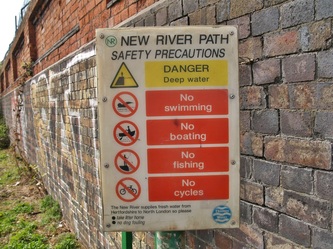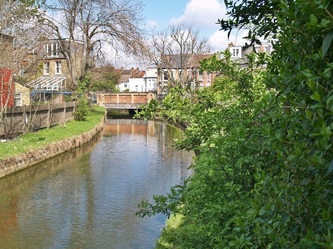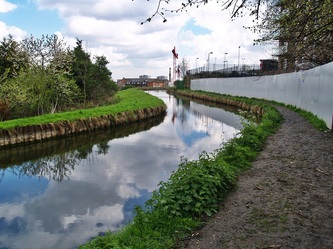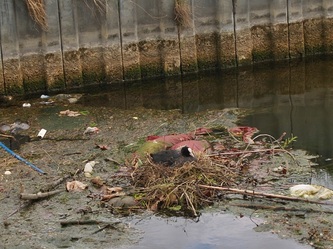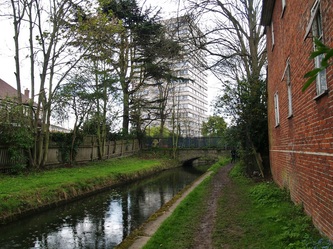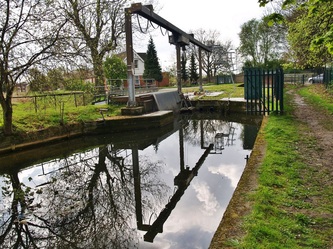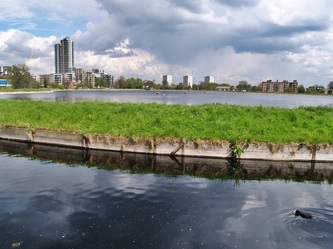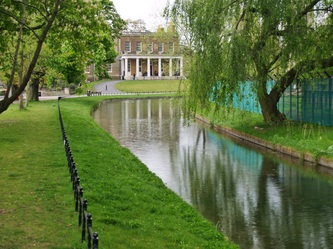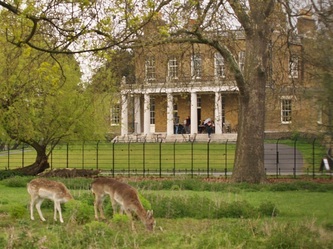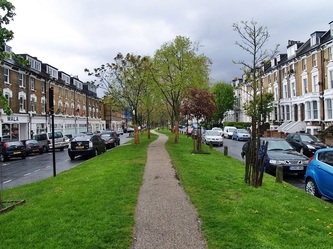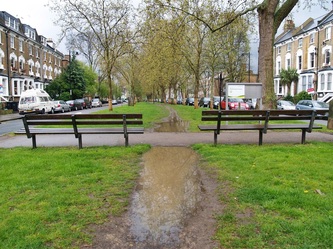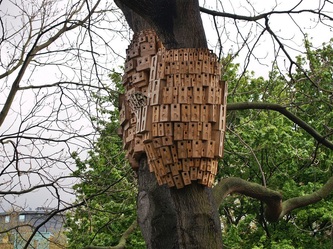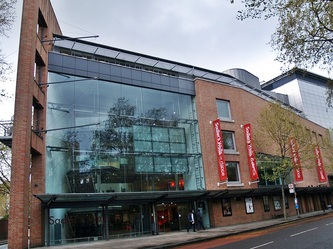London's Lesser Known Rivers - The New River
|
The New River is neither new nor a river. It is a water supply aqueduct, completed in 1613, to bring drinking water from Hertfordshire to North London. It used to go from New Gauge in Hertford down as far as Sadlers Wells in Clerkenwell but now the overground waterway now ends at Stoke Newington though there are some ornamental waters along its route south of Stoke Newington.
Here is some history of the New River provided by Thames Water: Before 1600 London’s water supply was limited to the River Thames, local streams, wells and springs. These sources, often contaminated, were distributed by sellers carrying water in wooden buckets. In 1600 Edmund Colthurst had the idea to bring water from the springs in Hertfordshire and Middlesex to London. Letters Patent were granted by King James I in 1604, and Colthurst, at his own expense, started to cut a channel from Chadwell Spring. Unfortunately, lack of money soon halted these works. In 1606, a Parliamentary Act granted the Corporation of London the power to make a “New River for bringing water to London from Chadwell and Amwell in Hertfordshire”. In 1609, the authority to carry out the works was given to Hugh Myddelton, a goldsmith and merchant adventurer, who proceeded to build the New River over the next four years. He employed Edward Wright, the mathematician, to survey and direct the course of the River and Colthurst as an overseer. By 1611 Myddelton realised he would not have the money to complete the project. King James I agreed to provide half the cost of the works on condition he received half the profits and that the New River could be constructed through his palace grounds at Theobalds. The King’s involvement overcame all opposition from local landowners to the scheme. The New River followed the 100ft contour of the Lee Valley in order to maintain its level. The total fall on the 62 km (39 miles) of the original course was only 5.8 metres (i.e. approx. 10 cm per km). Over 200 labourers were paid the equivalent of 4p a day to dig out the New River channel. Skilled carpenters received the equivalent of 6.5p a day to wharf the banks and erect bridges. Banks were raised and strengthened with day to stop leaks. The water was brought to the city streets via hollowed-out elm pipes. The total cost of the construction was estimated at £18,500. The impressive feat of engineering was completed in 1613 when a formal ceremony took place at the Round Pond in Islington; this is sited near the present New River Head, just below Sadler’s Wells. A play was staged to celebrate the opening which was attended by the Lord Mayor and Aldermen of the City of London. The New River Company was created by Charter in 1619 with Myddelton as the first Governor. The New River remains an essential part of London’s water supply, carrying up to 220 megalitres (48 million gallons) daily for treatment; this represents some 8 per cent of London’s daily water consumption. Both the New River’s carrying capacity and its sources of supply have significantly changed over time to meet rising demands for water. The original water sources at Chadwell and Amwell Springs, providing a maximum of 10 megalitres per day, were supplemented by the 1738 Statute that allows up to 102 megalitres to be taken daily from the River Lee. This level of supply was doubled in the mid 1800s with the construction of pumping stations to abstract water from deep wells along the New River. The course of the New River has also changed with many bends on the original course being straightened by construction of new direct river channels or pipeline sections and the watercourse shortened; it now ends at Stoke Newington, a length of some 38 km (24 miles) although you can still follow its route to Sadlers Wells via the New River Path The water level in the New River is regulated by sluice gates to meet the requirements of the pumping stations and reservoirs. In addition, a series of boreholes, constructed in the 1990s along the New River, enable surplus treated water to be stored in the chalk aquifer (the “Artificial Recharge Scheme’) and then pumped into the New River when extra water is required. |
Below is a gallery of pics taken walking from Hornsey Station down to Harringey . Click on a pic to enlarge & then the right arrow on the enlarged pic to continue looking through the gallery.
Below is a gallery of pics taken walking from Finsbury Park down to Stoke Newington Reservoirs. Click on a pic to enlarge & then the right arrow on the enlarged pic to continue looking through the gallery.
On the Facebook Page for this site David Leal writes : "Some years ago - maybe 60 - Dick Norton, a barge builder in East Greenwich, built two very shallow barges to navigate the New River for maintenance. They were launched in Greenwich, towed across the Thames and then picked up by a crane, and put on to a lorry to be taken to the New River".
Peter Chick replies to this website: "Approx 1972 the barges were normally berthed on the river beside the West Reservoir just past Lordship Road bridge at nighttime. Unlike today there was tight security with high fences and barbed wire to keep out the unruly locals. On several occasions me and two other reprobates climbed across Lordship Bridge to the barges (not an easy task as you had to get past the spinning spikes). We would then lie on our backs and 'walk' the barge under Lordship Bridge. We would then punt down the river and 'walk' the barge under the small Bridge near the East Reservoir and do the same under the much longer Bridge at Seven Sisters Road. We would punt as far as Green Lanes , go under that bridge and leave the barge there. Loutish behaviour I know but we never harmed anybody. Probably really annoyed the Water Workers, I'm sure they had better things to do".
Peter Chick replies to this website: "Approx 1972 the barges were normally berthed on the river beside the West Reservoir just past Lordship Road bridge at nighttime. Unlike today there was tight security with high fences and barbed wire to keep out the unruly locals. On several occasions me and two other reprobates climbed across Lordship Bridge to the barges (not an easy task as you had to get past the spinning spikes). We would then lie on our backs and 'walk' the barge under Lordship Bridge. We would then punt down the river and 'walk' the barge under the small Bridge near the East Reservoir and do the same under the much longer Bridge at Seven Sisters Road. We would punt as far as Green Lanes , go under that bridge and leave the barge there. Loutish behaviour I know but we never harmed anybody. Probably really annoyed the Water Workers, I'm sure they had better things to do".



